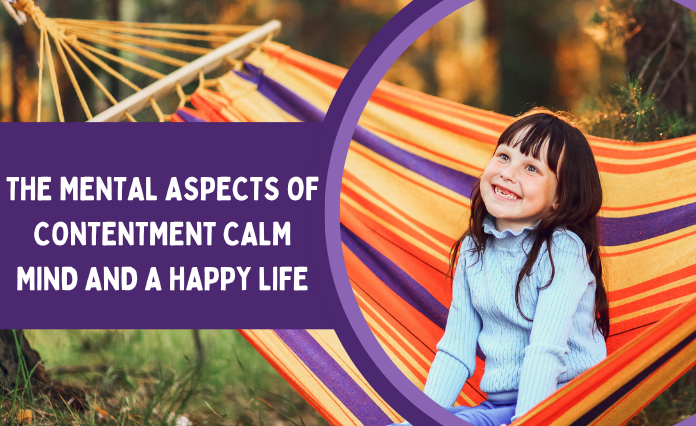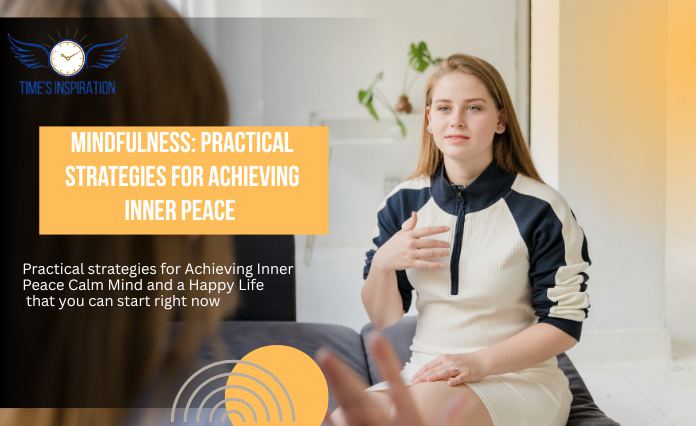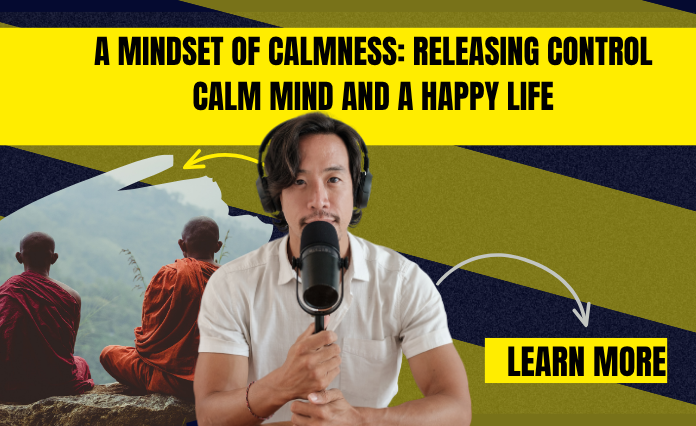The Science Behind a Calm Mind and a Happy Life
- October 10, 2025
- 0
The Science Behind a Calm Mind and a Happy Life being still can seem like a luxury in this fast-paced, always-on, goal-oriented world. But research proves that a
The Science Behind a Calm Mind and a Happy Life being still can seem like a luxury in this fast-paced, always-on, goal-oriented world. But research proves that a

The Science Behind a Calm Mind and a Happy Life being still can seem like a luxury in this fast-paced, always-on, goal-oriented world. But research proves that a tranquil mind isn’t only pleasant; it’s also powerful. More than any external accomplishment, it improves health, sharpens attention, and drives enjoyment.
The Science Behind a Calm Mind and a Happy Life key is mastery of your inner world, not a perfect life or a life devoid of challenges. Peace isn’t something we experience after the fact; rather, it is a product of our thoughts, breathing, and daily actions, according to research in the field of psychology.
Let’s take a look at what the latest studies have found regarding the link between serenity, brain chemistry, and genuine happiness—and how you may work on both on a daily basis.
Our brain chemistry alters when we’re calm. The area of the brain that deals with emotional responses (the amygdala) becomes silent as the area that handles logic and decision-making (the prefrontal cortex) steps up to the plate.
The parasympathetic nervous system, commonly referred to as the “rest and digest” mode, is activated by this transition. There is a noticeable slowing of the pulse rate, inhalation of breath, and muscular relaxation as you enter this state. The stress hormone cortisol decreases while the “feel good” chemical serotonin increases.
On the other hand, the fight-or-flight reaction takes over when we’re under continual stress. While the stress hormones adrenaline and cortisol are beneficial in times of crisis, they become detrimental when they remain constantly released. Feelings of worry, despair, and even physical ailments like hypertension can develop as a result of prolonged stress.
Being calm isn't a checkbox—it's an active neurological condition that optimizes your brain and body.
Many of us mistakenly think that material wealth, romantic fulfillment, or professional achievement are the keys to a happy life. However, that is not what the evidence shows. How well our brains balance four important chemicals is the primary determinant of happiness, according to neuroscientists:
Optimal levels of these substances allow us to experience feelings of well-being, joy, and vitality. What caught me off guard? Simple behaviors like exercise, being grateful, being attentive, laughing, and having meaningful relationships might trigger them.
When you can clear your head, it's easier for the feel-good chemicals to flow. When your body senses security, your brain shifts its focus from seeking benefits from outside sources to savoring the here and now.
From a psychological perspective, composure is the product of emotional regulation, which is the skill of controlling one’s reaction to stressful situations, negative emotions, and unknown outcomes.

The author of “Emotional Intelligence,” Dr. Daniel Goleman, claims that emotionally intelligent people don’t experience stress at all; they’ve just mastered the art of responding appropriately.
What do they do best:
This mental change reconfigures our neural pathways for living. The key to finding inner calm is learning to examine our emotions rather than letting them drag us.
Scientists have shown that practicing mindfulness may help calm the mind and increase happiness, so it’s clear that it’s more than just meditation. Regular mindfulness meditation alters brain structure, enlarging gray matter in learning and emotion regulation regions, according to research from Harvard and UCLA.
Being aware teaches your brain to stop dwelling on the past or planning for the future and just be in the here and now. This lessens the impact of rumination, a major contributor to anxiety and depression.

Some basic mindfulness techniques are:
Mindfulness trains your brain to be more resilient, so you can keep your cool in the face of adversity.
Being grateful is more than just polite; it’s a neurological phenomenon. The feel-good neurotransmitters dopamine and serotonin are released into the brain when we give thanks.
Those who took 10 weeks to reflect on their blessings and write down three things they were thankful for reported a 25% boost in happiness, according to research out of the University of California.
Retraining the brain’s default state from pessimism to appreciation, practicing gratitude changes one’s perspective from what’s lacking to what’s functioning. This technique promotes serenity by alleviating tension and emotions of need.
Being calm makes you more strategic, not slower. The capacity to adjust and think rationally in stressful situations is referred to as “cognitive flexibility” in the field of neuroscience.
Concentration and calmness are frequently more conducive to success for leaders, sportsmen, and creative types than hyperactivity. This condition, called “flow,” occurs when your mind and body are in perfect harmony and you give your whole attention to the task at hand.
Innovation, judgment, and resolution of problems are all enhanced by mental tranquility. It trains your brain to think things through before responding.
The key to a peaceful and joyful life isn’t a radical shift, but rather the development of regular routines that help keep the mind in check.
Here are several everyday habits supported by science:
Although individually they may not seem like much, these routines lay the groundwork for long-term emotional stability and happiness.
A lot of our anxiety stems from our attempts to manage things over which we have no control. Being at peace with yourself requires giving it your all while letting go of the things you can’t change.
A central tenet of both Stoicism and contemporary psychology is this. “What counts is not your circumstances, but your reaction to them,” Epictetus said.

Energy moves from resistance to responsiveness when we cease resisting reality and begin to flow with it. As a result, we become stable, flexible, and unmovable.
While it’s easy to represent happiness as elation or jubilation, the quiet kind is more accurate. Being at peace with oneself, one’s life, and one’s purpose brings about this profound sense of contentment.
An emotionally intelligent individual is calm, not heartless. Feelings of joy, sadness, or fear do not have the power to overpower them. A state of complete health is characterized by that equilibrium.
You can start right now without relocating to a mountain retreat or meditating for hours on end. Begin with these simple everyday habits:
You can retrain your brain for contentment and joy with little, regular work.
The scientific evidence is overwhelming for The Science Behind a Calm Mind and a Happy Life: living a life free of mental stress improves health, happiness, and fulfillment. It is neither an innate ability or a special talent, but rather a skill that everyone may cultivate.

Relaxing your body, training your mind to respond sensibly, and keeping your heart open are all outcomes of practicing stillness. The payoff is more than simply tranquility; it’s being fully present, having crystal clear thoughts, and relishing life to the fullest.
As Thich Nhat Hanh beautifully said, “Peace is every step.” It all starts in your head. Learn more Information Subscribe Now.
Subscribe Now